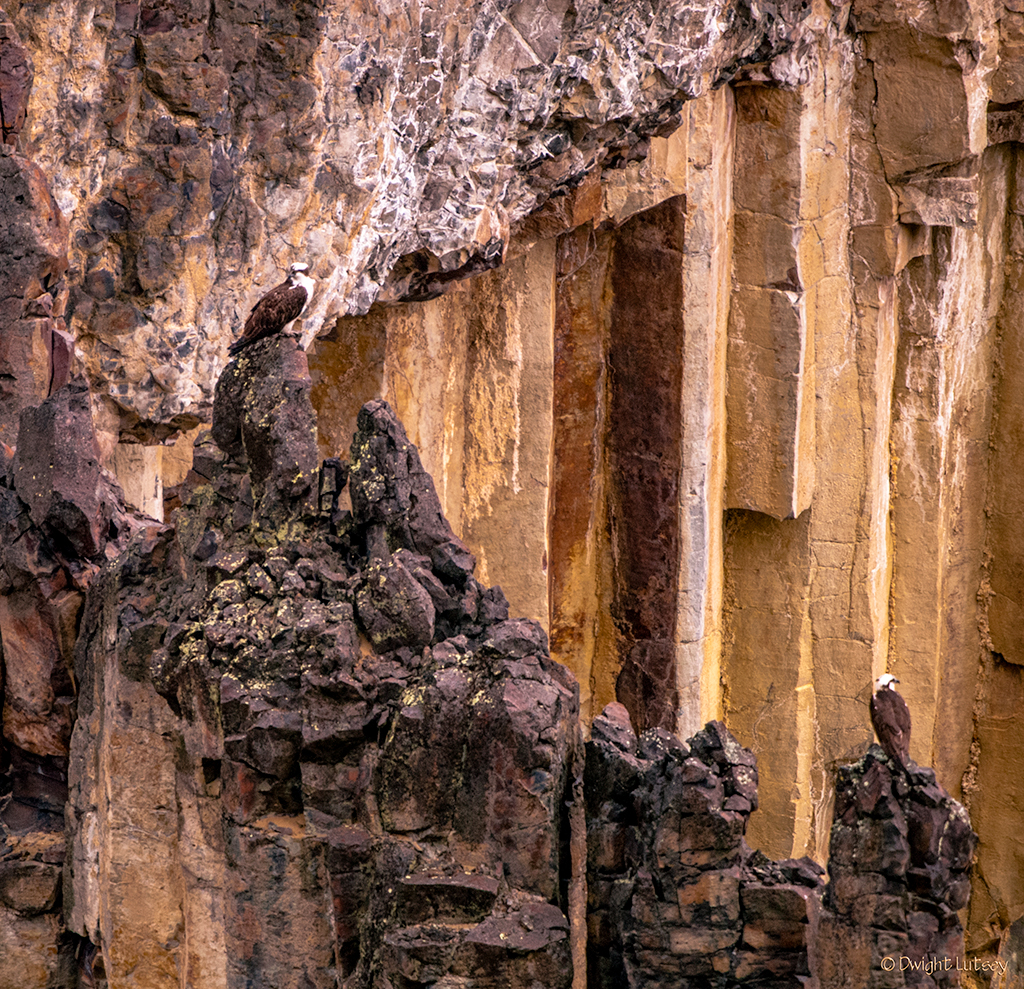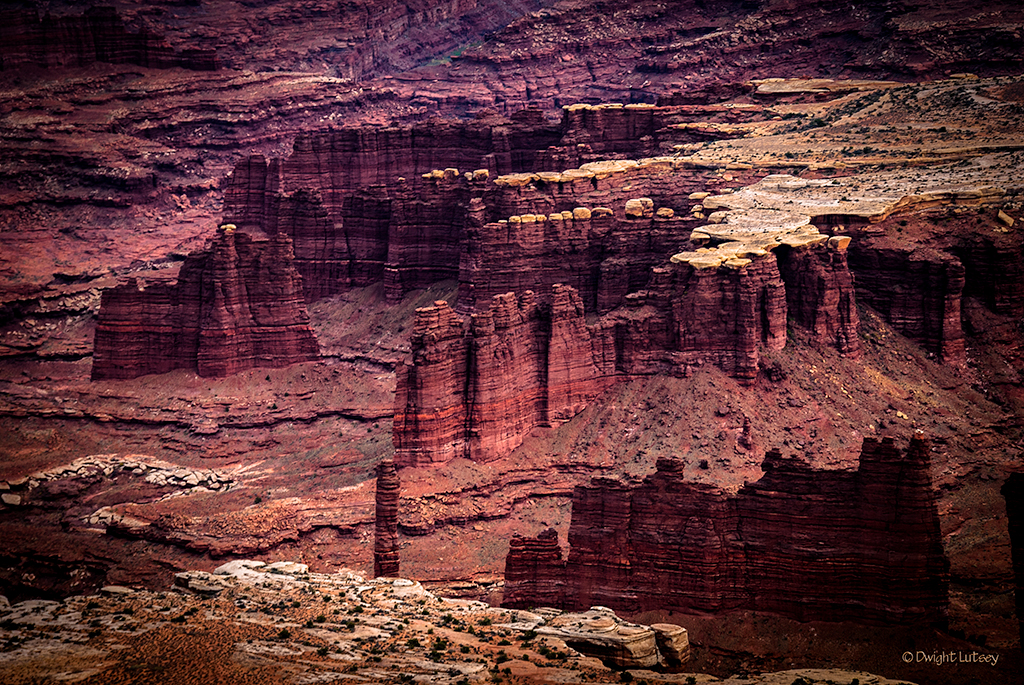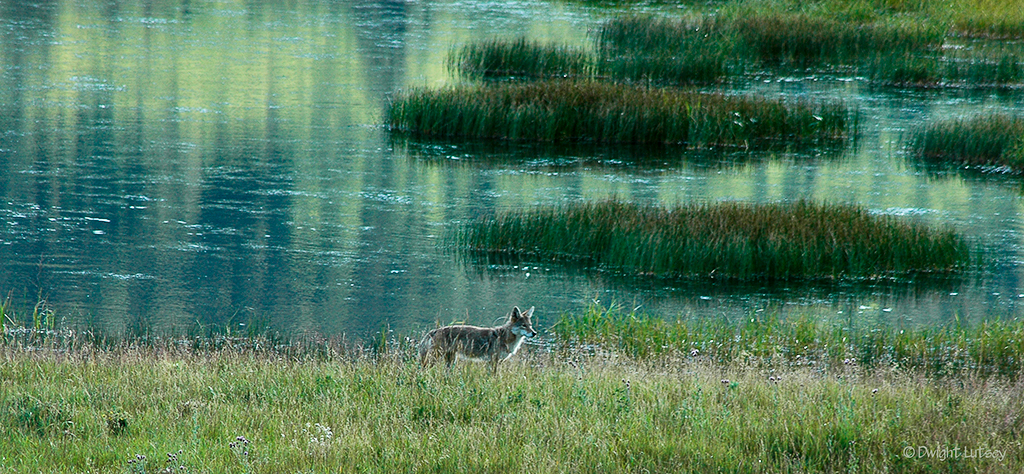 Osprey or Fish Eagles Yellowstone click to enlarge
Osprey or Fish Eagles Yellowstone click to enlarge
M. C. Escher was a Dutch artist who created fantastical images of staircases twisting and turning back onto themselves, repeating patterns, hands drawing each other, many scenes of an architectural bent (No pun intended… maybe ) that make you dizzy when you try and follow the lines through the pictures, and multiples of repeating patterns, such as fish gradually turning into birds as your eye travelled over the image. His style of art was based originally on architectural features he found on buildings in Italy when he traveled there. He is kind of a famous art guy whose work you will recognize immediately whether you know his name or not.
It is unclear whether Escher spent any time at the Calcite Springs overlook in Yellowstone, him being a Dutch guy that rarely left Europe, but had he, he would have seen this view and I’m pretty certain it would have sent his little neurons firing themselves into a frenzy with all the possibilities for creating new work.
During my research I was unable to ascertain if Escher had extensive knowledge of Fish Eagles or Osprey as they are better known here, but I’m sure he would have added them to his drawings just because they are so cool looking sitting there. If I ever run across the guy in a future life and I can speak Dutch I’m going to check that out.
I think I’m on to something here. I think spending time in Yellowstone is more than just photographing the occasional grizzly or wolf. I think there might be sights and experiences here that will stir your imagination in other ways, so I’m going to keep my eye out, figuratively speaking, for other examples of art that may be hidden in this incredible place. In fact I heard that there is a girl working at the Food court at Fishing Bridge visitor center that looks just like that girl who Rembrandt painted, the smiley face one. I’m going to go check that out.



You must be logged in to post a comment.